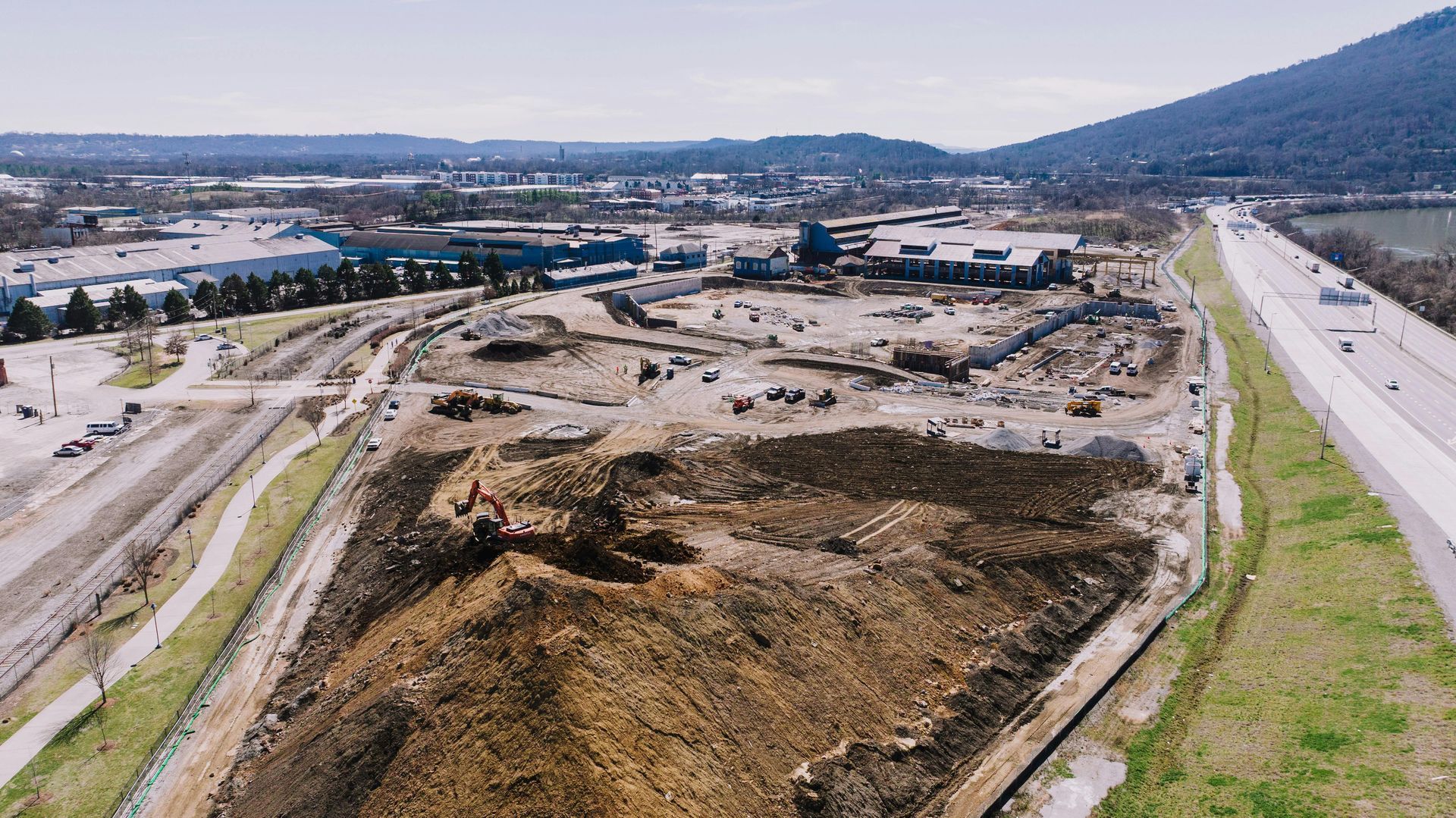Should You Handle Variance Requests on Your Own?
By managing variance requests independently, you can have significant advantages in terms of cost savings and process control. However, in doing so, you need to carefully consider your skills and resources. Handling these requests solo can streamline decision-making and reduce expenses, but the complexity involved means you have to balance independence with strategic collaboration. You should understand when to do it alone and when to seek professional assistance to successfully manage your variance requests without burning out.
Key Takeaways
- Independent variance management reduces costs and accelerates decision-making by eliminating external approval delays
- Solo management requires substantial time investment, organizational skills, and effective resource allocation
- Strong communication skills, thorough documentation practices, and a deep understanding of regulatory compliance are essential
- Collaboration with team members or professionals improves outcomes for complex, high-stakes variance requests
- Variance management software and digital tools significantly enhance tracking efficiency and reduce administrative burden
What Are Variance Requests in Project Management?
Variance requests are formal procedures for documenting and approving deviations from a project's original plan. When unexpected circumstances affect your timeline, budget, or scope, these requests provide a structured framework for managing changes professionally and transparently.
Rather than making informal adjustments, variance request processes ensure all stakeholders understand what's changing and why. This approach aligns with core project management principles by maintaining accountability and clear communication throughout project modifications. The formalization of these requests creates an audit trail that protects both project managers and organizations from misunderstandings or disputes about approved changes.
In practice, variance requests typically address scenarios such as budget overruns due to unforeseen material costs, schedule delays caused by external factors, or scope modifications requested by clients. Each request should clearly articulate the nature of the variance, its root cause, the proposed solution, and the expected impact on project deliverables. This level of detail ensures decision-makers have the information necessary to evaluate requests objectively.
Think of variance requests as your official channel for saying, "We need to adjust this aspect of our plan due to these specific circumstances." This structured approach helps maintain team trust while keeping projects adaptable to real-world challenges, creating a balance between flexibility and control that's essential for successful project delivery.
Benefits of Managing Variance Requests Independently
Cost Savings and Budget Optimization
Handling variance requests yourself delivers measurable financial benefits through cost reduction and smarter budget optimization. When you manage the process internally, you eliminate consultant fees, reduce administrative overhead, and identify savings opportunities that external parties might overlook.
Your direct involvement means faster identification of cost-effective alternatives and more strategic allocation of project funds. This hands-on approach transforms variance management from an expense center into a value-generating activity.
Enhanced Process Control and Risk Management
Independent management gives you complete authority over your variance workflow, enabling customized process optimization that fits your team's specific needs. You can implement tailored approval stages, establish quality checkpoints, and modify procedures based on real-time feedback.
This control extends to risk assessment, allowing you to identify potential issues early and implement preventive measures before they escalate. When you're steering the process, you can prioritize what matters most and eliminate unnecessary bureaucratic steps that slow progress.
Accelerated Decision-Making
Self-managed variance requests dramatically reduce approval timelines by eliminating multi-layer authorization processes. This streamlined approach means
faster approvals and more responsive project management.
| Process Stage | Traditional Approach | Independent Management |
|---|---|---|
| Request Submission | Multiple platforms, complex forms | Single, streamlined process |
| Approval Timeline | Days to weeks | Hours to same day |
| Communication | Extensive back-and-forth exchanges | Direct, efficient dialogue |
| Error Correction | Higher risk, delayed resolution | Immediate identification and fixes |
| Final Decision | Delayed by multiple reviews | Prompt, informed conclusions |
This efficiency translates into improved project momentum and a more agile response to changing circumstances.
Challenges of Solo Variance Management
Managing variance requests independently can feel like juggling multiple priorities simultaneously; it's demanding and requires careful attention to avoid dropping critical tasks. The primary challenge involves resource allocation: you'll need to balance regular responsibilities with the additional workload that variance requests create.
Common obstacles include:
- Time pressure – Variance requests demand thorough analysis, documentation, and follow-up, often creating scheduling conflicts with other duties
- Limited perspective – Without collaborative input, you may miss alternative solutions or fail to recognize potential problems before they develop
- Decision fatigue – Sole responsibility for approvals can lead to overthinking, second-guessing, and delayed action
- Knowledge gaps – Complex regulatory requirements or technical specifications may exceed individual expertise
- Burnout risk – Sustained solo management without support systems can lead to exhaustion and diminished effectiveness
Recognizing these challenges early allows you to develop strategies for mitigation rather than discovering limitations during critical project phases.
Essential Skills for Effective Variance Management
Understanding Local Regulations and Compliance
Comprehensive knowledge of local zoning laws and regulatory compliance requirements forms the foundation of successful variance management. Regulations vary significantly between jurisdictions, making location-specific expertise critical.
You'll need to stay current on regulatory changes, understand approval criteria for different variance types, and know which authorities to consult when guidance is unclear. This expertise prevents costly delays and ensures your requests meet all legal requirements from initial submission.
Communication and Documentation Excellence
Effective variance management depends equally on what you say and how you record it. Active listening helps you understand stakeholder concerns and gather complete information before making decisions. When you truly focus on others' input rather than planning your response, you build trust and catch critical details that might otherwise be missed. This skill becomes particularly valuable during high-pressure situations where emotions may run high and misunderstandings can derail progress.
Strong feedback techniques, such as paraphrasing key points and asking clarifying questions, ensure everyone shares the same understanding. These techniques prevent the costly errors that arise from assumptions or incomplete information. Meanwhile, robust documentation strategies and systematic request tracking create the paper trail necessary for accountability and future reference. Proper documentation also serves as valuable historical data, helping you identify recurring patterns and improve your variance management processes over time.
Key documentation practices:
- Standardized intake forms – Capture consistent information for every request, eliminating gaps in your records
- Digital tracking systems – Use spreadsheets or specialized software to monitor status, deadlines, and approval stages
- Time-stamped records – Date and timestamp all entries to establish a clear chronology and accountability
- Regular status updates – Share progress reports with stakeholders to maintain transparency and team cohesion
When to Seek Professional Assistance
Even highly capable managers benefit from expert consultation when variance requests involve complex technical requirements or unfamiliar regulatory terrain. Professional assistance becomes particularly valuable when you're navigating your first variance request, dealing with specialized compliance issues, or facing resistance from approval authorities.
Professionals bring specialized knowledge of local regulations, established relationships with regulatory agencies, and experience negotiating favorable outcomes. If your request involves significant financial stakes, potential legal complications, or technical specifications beyond your expertise, the investment in professional support typically delivers strong returns through improved approval rates and reduced revision cycles.
Consider professional help when the variance process feels overwhelming or when missing a critical detail could jeopardize your entire project. Strategic use of expert resources doesn't signal weakness—it demonstrates smart risk management and commitment to optimal outcomes.
Tools That Simplify Variance Management
The right technology and resources transform variance management from an overwhelming administrative burden into a manageable, systematic process.
Essential variance management tools:
- Variance management software – Specialized platforms automate tracking, maintain organized records, and identify patterns across multiple requests, significantly reducing manual effort
- Collaborative tools – Shared documents, project management platforms, and team communication apps keep everyone synchronized and ensure no stakeholder feels excluded
- Templates and checklists – Standardized forms maintain consistency across requests, reduce errors, and ensure comprehensive information gathering
- Professional communities – Online forums and industry groups connect you with peers facing similar challenges, providing fresh perspectives and proven strategies
These resources create support systems that enhance your capabilities while maintaining the independence and control that make solo management attractive.
Balancing Independence with Collaboration
Successful variance management doesn't mean choosing between complete autonomy and total delegation. It requires finding the optimal balance between control mechanisms and collaboration techniques.
Strong control mechanisms, such as approval workflows, quality checklists, and milestone reviews. Keep your process organized and ensure nothing slips through the gaps. However, excessive control can alienate team members and limit the valuable input that improves decision quality.
Effective collaboration techniques invite team participation through regular feedback sessions, open communication channels, and shared decision-making on appropriate issues. This approach distributes the workload, leverages diverse expertise, and creates ownership among stakeholders.
Think of variance management like conducting an orchestra: you set the tempo and maintain overall direction while allowing skilled team members to contribute their expertise. This balanced approach prevents burnout, produces better outcomes, and maintains the efficiency benefits of streamlined decision-making.
Frequently Asked Questions
How do variance requests impact project budgeting?
Variance requests often necessitate budget adjustments that can trigger cost overruns if not carefully managed and monitored throughout the project lifecycle. Maintaining close collaboration with your finance team and stakeholders helps you address these budgetary changes proactively, ensuring your project remains financially viable while accommodating necessary modifications.
What legal considerations apply to variance requests?
Variance requests must comply with local zoning ordinances, building codes, and contractual obligations, as failure to meet these legal requirements can result in rejected applications, project delays, or potential litigation. You need to carefully follow all relevant regulations and contract terms to protect both your team and organization, while ensuring all stakeholders feel secure throughout the variance process.
Can variance requests affect project stakeholder relationships?
Variance requests can significantly impact stakeholder trust, particularly when changes affect timelines, budgets, or project outcomes that stakeholders care about. Employing clear communication strategies and maintaining transparency throughout the variance process helps preserve and even strengthen relationships by demonstrating professionalism and keeping everyone aligned on project direction.
How do cultural differences influence variance request handling?
Cultural differences shape communication styles and negotiation approaches, with some cultures preferring direct communication while others value indirect, relationship-focused interactions. Understanding and respecting these cultural variations helps you build trust with diverse stakeholders, adapt your communication approach appropriately, and strengthen the collaborative foundation necessary for successful variance management.
What are the long-term effects of frequent variance requests?
High variance request frequency can create long-term implications including team disconnection, process inconsistency, and extended project timelines that erode confidence in project management capabilities. Establishing clear guidelines, maintaining transparent communication, and addressing root causes of frequent variances helps keep teams united and processes running smoothly while minimizing the disruptive effects of repeated changes.
Final Thoughts
Managing variance requests independently offers compelling advantages in cost control, process efficiency, and decision speed when you possess the necessary skills and organizational tools. However, successful solo management requires honest assessment of your capabilities, recognition of when complexity demands professional input, and commitment to maintaining robust documentation and communication practices.
The key to sustainable variance management lies in strategic flexibility, that is, maintaining control over routine requests while knowing when to engage collaborative support for complex situations. By leveraging appropriate tools, developing essential skills, and balancing independence with teamwork, you can handle variance requests effectively without sacrificing quality or exhausting your resources.
Struggling with variance requests? Let our land services experts handle it.
We ensure compliance, faster approvals, and peace of mind.
Reference:
https://www.simplypsychology.org/active-listening-definition-skills-benefits.html


